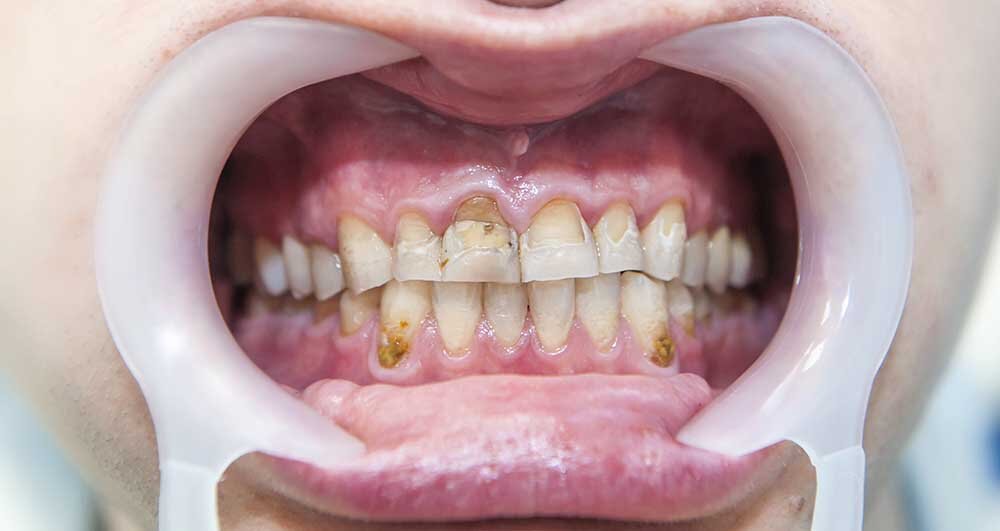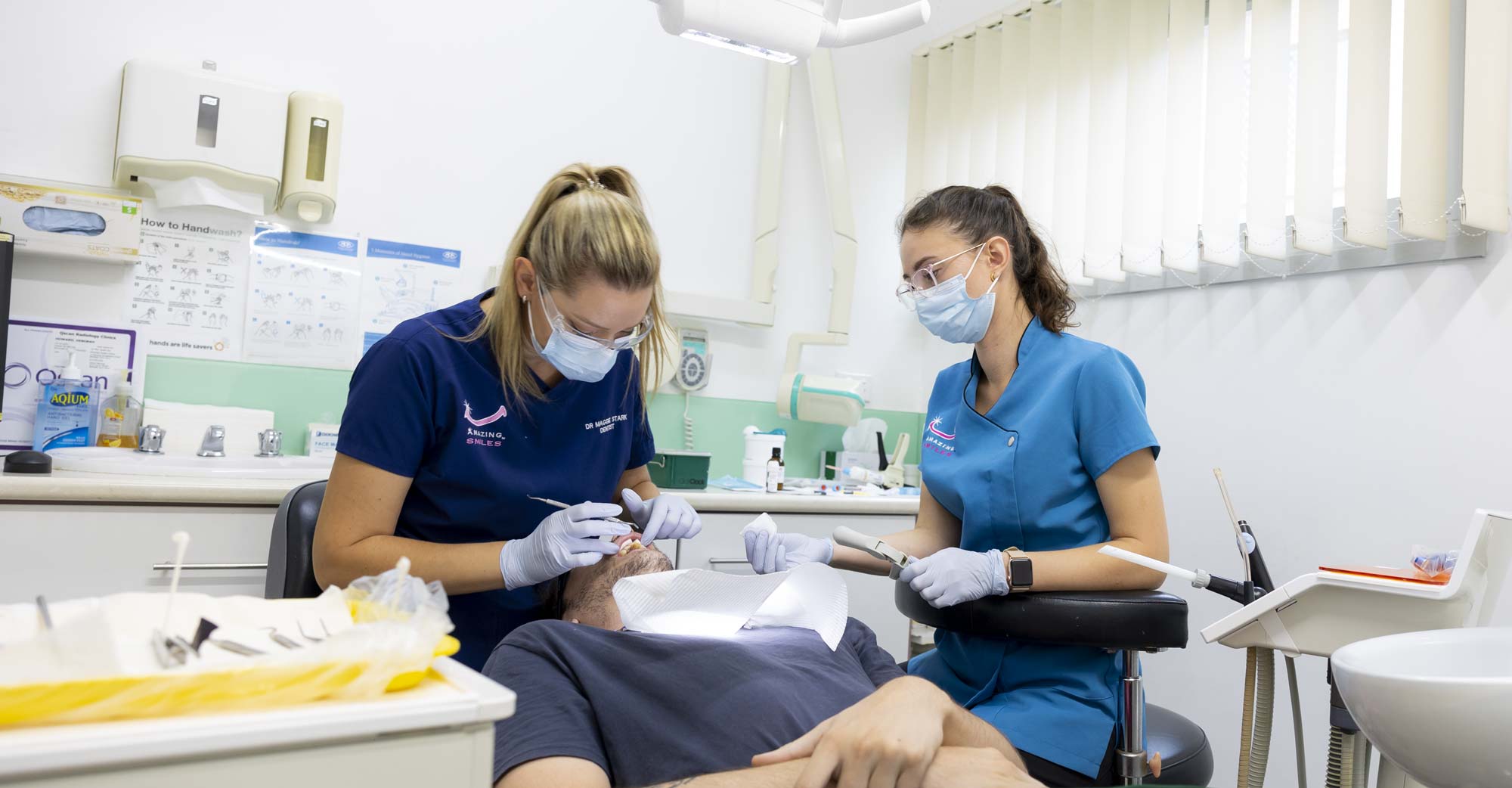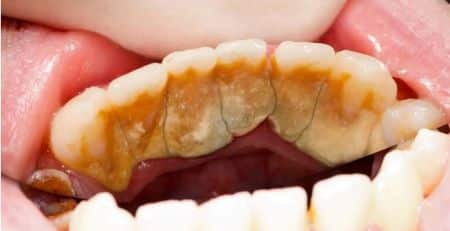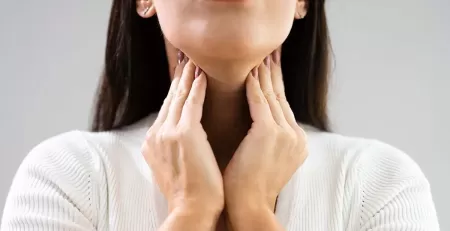Table of Contents
Fluorosis is a dental condition that affects the appearance of tooth enamel. It usually occurs in younger children who may incidentally consume excessive fluoride levels in toothpaste or mouthwash.
Unknowingly, fluoride can be found in everyday consumables such as:
- Fluoridated drinking water
- Supplements
- Fluoride-fortified fruit juices
- Soft drinks
In these cases, governing organisations regularly use fluoride in food and beverages.
Fluoride exists naturally in water, which varies depending on geographic location.
Fluoride minerals can also be found naturally in fish, rice, and even tea.
What are the symptoms of fluorosis?
Affected teeth appear mildly discoloured, which may include the following:
- The irregular surface colour of teeth, such as faint white lines
- Yellow or brown staining on teeth
- The formation of pits
In most cases, Fluorosis doesn’t affect the health of your teeth. It isn’t a form of oral disease or a sign of decay.
However, fluorosis is misinterpreted as staining and requires a thorough professional dental examination to diagnose.
What causes fluorosis?
In most cases, fluorosis occurs in younger children while their teeth are growing. Children are most susceptible as they may incidentally consume excessive fluoride levels over an extended time.
New teeth are more vulnerable to this while underneath the gum, which is why children are affected more often.
Once new adult teeth breach through the gum, they are less likely to be affected by Fluorosis.
How do I prevent fluorosis from developing in my child?
During the earlier years of brushing, monitoring your child’s habits is vital.
Whenever possible, prevent your child from using excessive amounts of toothpaste and avoid swallowing toothpaste or mouthwash.
A pea-sized amount of fluoride toothpaste is the recommended amount.
Try encouraging your child to brush twice a day for two minutes. Flossing once a day is also recommended.
For children under six, try to avoid fluoride mouthwash.
Even though mouthwash is a good habit for everybody, young children are more likely to accidentally swallow mouthwash as they haven’t appropriately developed their swallowing reflexes.
What is severe dental fluorosis?

Severe dental fluorosis is a condition that occurs when there is excessive exposure to fluoride during tooth development, typically in childhood.
It is characterised by significant enamel hypoplasia, which means that the enamel on the teeth is poorly formed and may appear pitted, stained, or have brown or black spots.
The severity of dental fluorosis can vary, with mild cases showing faint white lines or streaks on the enamel and severe cases resulting in extensive enamel damage and discolouration.
To identify severe dental fluorosis, dentists and dental professionals examine the teeth for specific signs.
These signs include deeply stained or discoloured enamel, rough or pitted surfaces, and sometimes even enamel loss, which can lead to tooth sensitivity and an increased risk of cavities.
In severe cases, the teeth may have a mottled or blotchy appearance, making them visually distinct from healthy teeth.
Is fluoride in tap water & can that affect my teeth?
Fluoride is a natural element in water, including both fresh and seawater.
Beginning in Australia in the 1960s, scientists started including additional fluoride into the public water supply at a safe level. This process is known as water fluoridation.
The purpose is to improve oral health throughout the community, regardless of age, income, or lifestyle.
Consequently, Water Fluoridation delivers the oral advantages of fluoride, helping to reduce tooth decay and gum disease.
The process in Australia is performed under strict management and compliance measures (Safe Drinking Water Act 2003), allowing additional fluoride in water to be safe to drink.
A recent study by The National Health and Medical Research Council (NHMRC’s) regarding the safety and effectiveness of Water Fluoridation concluded that fluoridation provides a safe and efficient method of reducing tooth decay.
Because of its benefits for adults and children, Water Fluoridation has been campaigned internationally by recognised organisations in Australia and worldwide.
A few include the World Health Organisation, the Australian Medical Association, and the Australian Dental Association.
How do I treat fluorosis, or what can a dentist near me do to treat fluorosis?
In most cases, Fluorosis is mild, with no dental treatment necessary.
Cosmetic dentists can use various dental treatments to help mask teeth affected by fluorosis.
When dentists identify staining on a patient’s teeth, they can perform deep cleaning and polishing techniques during a comprehensive check-up and clean.
Before undergoing any procedures, it is vital to consult a dentist for a professional diagnosis and recommendations specific to your needs.
- Deep teeth cleaning and polishing can help remove surface stains. Combining a deep clean with dental tooth whitening can result in significant improvements. However, teeth whitening can temporarily make the appearance of fluorosis more prominent. Therefore, patients seeking optimum results may recommend consecutive teeth whitening treatments.
- Composite Veneers or Porcelain Veneers are highly effective methods since this procedure can instantly improve the appearance of your smile. Veneers cover the face of each treated tooth, removing the appearance of past fluorosis. Veneers also improve teeth’s shape and size, fill minor gaps, and improve overall white colour (shade).
- Bonding Edge Bonding is a popular, effective method that coats the tooth or affected area with a solid, natural-looking resin on top of your enamel. The difference between bonding and composite veneers is that bonding only covers a small part of the tooth. In comparison, composite veneers cover the entire visual area of the tooth.
- Dental Crowns are porcelain teeth that cover the whole natural tooth after being shaved down to a post-like structure to hold the crown. This process may depend upon the patient’s functional and aesthetic needs, which a dentist determines. Porcelain Veneers differ from Dental Crowns in that they only cover the front of the tooth and are less invasive.
Book in with a dentist near me regarding dental fluorosis

If you suspect you are suffering from dental fluorosis, seeking a professional diagnosis and treatment from a dentist is crucial.
Amazing Smiles has family-friendly dental clinics on the Gold Coast, Jimboomba, Logan, Wynnum, and Bray Park.
Our experienced team can provide comprehensive care for dental fluorosis and help manage your oral health. We offer various general, restorative, and cosmetic dental services to address your needs.
Book an appointment today to receive personalised care and regain a healthy and confident smile.
Disclaimer: The information in this blog is for educational purposes only and should not be taken as professional dental advice. It is not a substitute for a thorough examination or treatment from a qualified dentist. Always consult your dentist for questions about your oral health and do not ignore professional advice.







